setting.xml配置文件 --转载
转载出处:http://www.cnblogs.com/yakov/archive/2011/11/26/maven2_settings.html
在此,简单的说下 setting.xml 和 pom.xml这两各配置文件,到此是怎样?
setting.xml
setting.xml,这个配文件,是全局的。 比如你的是构建,web项目。我的是Hadoop和spark项目。 setting这个文件,你我都可以是一样的。因为它是全局的配置,相当于里面只要写入阿狸开源私服,达内私服,开源中国私服等。就是一个中央仓库网址的作用!
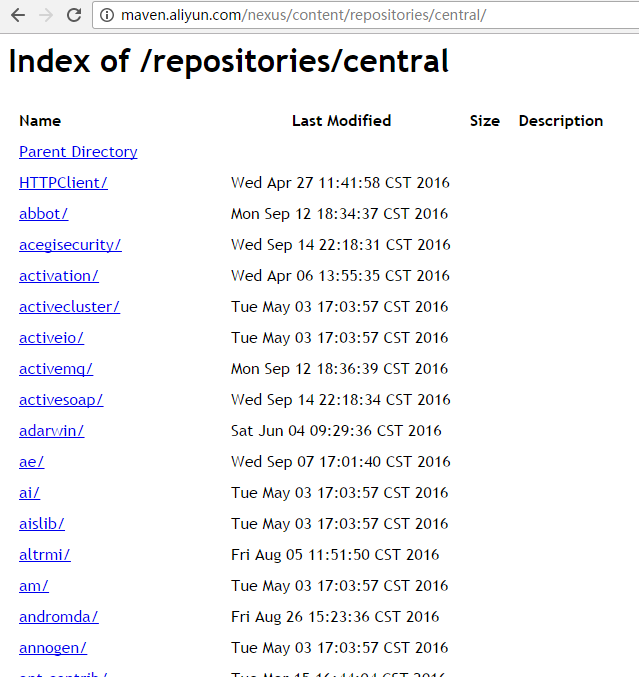
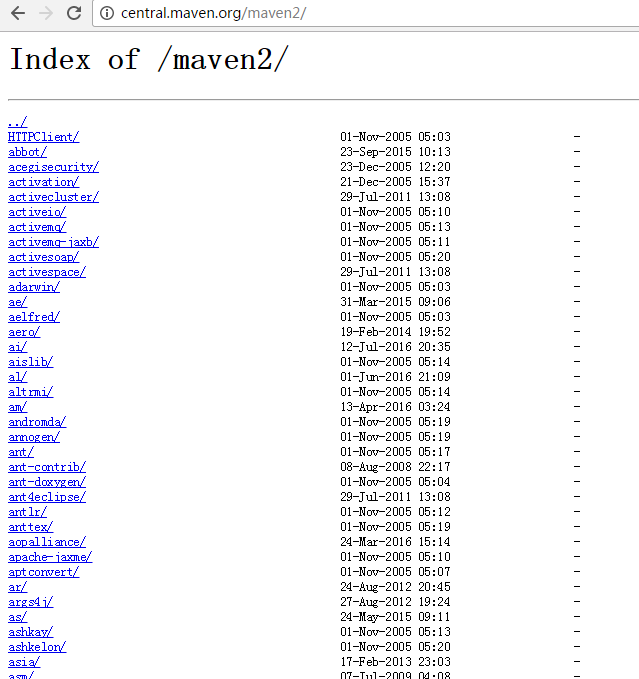
pom.xml
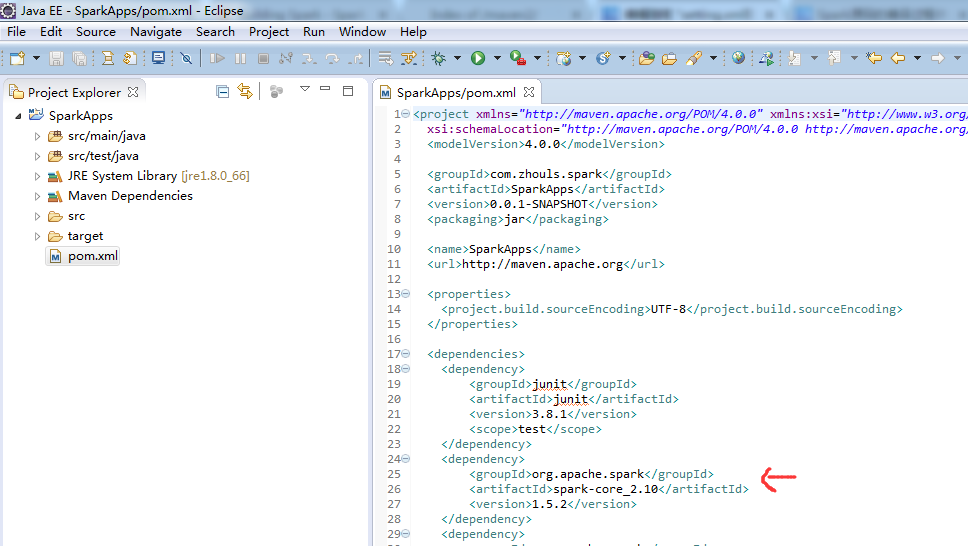
1、Eclipse里Maven创建项目、自动打依赖jar包:
setting.xml配置文件的内容:
<project xmlns="http://maven.apache.org/POM/4.0.0" xmlns:xsi="http://www.w3.org/2001/XMLSchema-instance"
xsi:schemaLocation="http://maven.apache.org/POM/4.0.0 http://maven.apache.org/xsd/maven-4.0.0.xsd">
<modelVersion>4.0.0</modelVersion> <groupId>com.zhouls.spark</groupId>
<artifactId>SparkApps</artifactId>
<version>0.0.1-SNAPSHOT</version>
<packaging>jar</packaging> <name>SparkApps</name>
<url>http://maven.apache.org</url> <properties>
<project.build.sourceEncoding>UTF-8</project.build.sourceEncoding>
<junit.version>4.10</junit.version>
<spark.version>1.5.2</spark.version>
<hadoop.version>2.6.0</hadoop.version>
</properties> <dependencies>
<dependency>
<groupId>junit</groupId>
<artifactId>junit</artifactId>
<version>${junit.version}</version>
<scope>test</scope>
</dependency>
<dependency>
<groupId>org.apache.spark</groupId>
<artifactId>spark-core_2.10</artifactId>
<version>${spark.version}</version>
</dependency>
<dependency>
<groupId>org.apache.spark</groupId>
<artifactId>spark-sql_2.10</artifactId>
<version>${spark.version}</version>
</dependency>
<dependency>
<groupId>org.apache.spark</groupId>
<artifactId>spark-hive_2.10</artifactId>
<version>${spark.version}</version>
</dependency>
<dependency>
<groupId>org.apache.spark</groupId>
<artifactId>spark-streaming_2.10</artifactId>
<version>${spark.version}</version>
</dependency>
<dependency>
<groupId>org.apache.spark</groupId>
<artifactId>spark-streaming-kafka_2.10</artifactId>
<version>${spark.version}</version>
</dependency>
<dependency>
<groupId>org.apache.hadoop</groupId>
<artifactId>hadoop-client</artifactId>
<version>${hadoop.version}</version>
</dependency>
</dependencies> <build>
<sourceDirectory>src/main/java</sourceDirectory>
<testSourceDirectory>src/main/test</testSourceDirectory> <plugins>
<plugin>
<artifactId>maven-assembly-plugin</artifactId>
<configuration>
<descriptorRefs>
<descriptorRef>jar-with-dependencies</descriptorRef>
</descriptorRefs>
<archive>
<manifest>
<mainClass></mainClass>
</manifest>
</archive>
</configuration>
<executions>
<execution>
<id>make-assembly</id>
<phase>package</phase>
<goals>
<goal>single</goal>
</goals>
</execution>
</executions>
</plugin> <plugin>
<groupId>org.codehaus.mojo</groupId>
<artifactId>exec-maven-plugin</artifactId>
<version>1.2.1</version>
<executions>
<execution>
<goals>
<goal>exec</goal>
</goals>
</execution>
</executions>
<configuration>
<executable>java</executable>
<includeProjectDependencies>true</includeProjectDependencies>
<includePluginDependencies>false</includePluginDependencies>
<classpathScope>compile</classpathScope>
<mainClass>com.zhouls.spark.SparkApps.cores.WordCount</mainClass>
</configuration>
</plugin> <plugin>
<groupId>org.apache.maven.plugins</groupId>
<artifactId>maven-compiler-plugin</artifactId>
<version>2.3.2</version>
<configuration>
<source>1.6</source>
<target>1.6</target>
</configuration>
</plugin> </plugins>
</build>
</project>
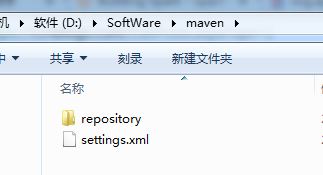


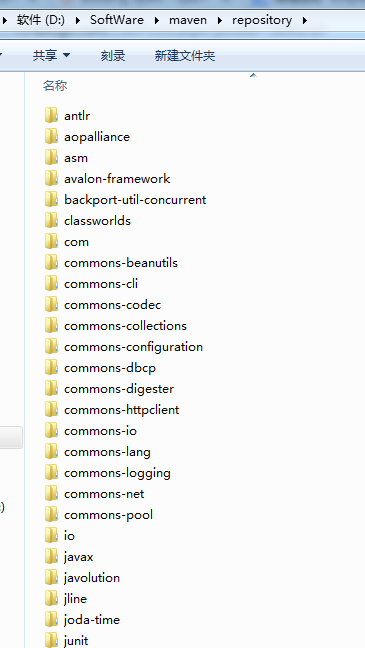

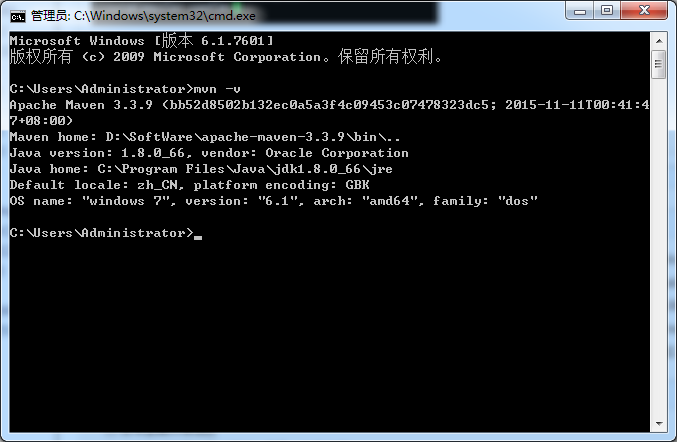
2、Hadoop/Spark源码编译时
setting.xml配置文件的内容:<?xml version="1.0" encoding="UTF-8"?>
<?xml version="1.0" encoding="UTF-8"?>
<!--Licensed to the Apache Software Foundation (ASF) under one or more contributor
license agreements. See the NOTICE file distributed with this work for additional
information regarding copyright ownership. The ASF licenses this file to
you under the Apache License, Version 2.0 (the "License"); you may not use
this file except in compliance with the License. You may obtain a copy of
the License at http://www.apache.org/licenses/LICENSE-2.0 Unless required
by applicable law or agreed to in writing, software distributed under the
License is distributed on an "AS IS" BASIS, WITHOUT WARRANTIES OR CONDITIONS
OF ANY KIND, either express or implied. See the License for the specific
language governing permissions and limitations under the License. --> <!--This is the configuration file for Maven. It can be specified at two levels:
|
| 1. User Level. This settings.xml file provides configuration for a single user, and is normally provided in ${user.home}/.m2/settings.xml.
| NOTE: This location can be overridden with the CLI option:
| -s /path/to/user/settings.xml
|
| 2. Global Level. This settings.xml file provides configuration for all Maven
| users on a machine (assuming they're all using the same Maven installation). It's normally provided in
| ${maven.home}/conf/settings.xml.
| NOTE: This location can be overridden with the CLI option:
| -gs /path/to/global/settings.xml
|
| The sections in this sample file are intended to give you a running start at
| getting the most out of your Maven installation. Where appropriate, the default
| values (values used when the setting is not specified) are provided.--> <settings xmlns="http://maven.apache.org/SETTINGS/1.0.0" xmlns:xsi="http://www.w3.org/2001/XMLSchema-instance"
xsi:schemaLocation="http://maven.apache.org/SETTINGS/1.0.0 http://maven.apache.org/xsd/settings-1.0.0.xsd"> <!-- localRepository
| The path to the local repository maven will use to store artifacts.
|
| Default: ${user.home}/.m2/repository
<localRepository>/path/to/local/repo</localRepository>
--> <!-- interactiveMode
| This will determine whether maven prompts you when it needs input. If set to false,
| maven will use a sensible default value, perhaps based on some other setting, for
| the parameter in question.
|
| Default: true
<interactiveMode>true</interactiveMode>
--> <!-- offline
| Determines whether maven should attempt to connect to the network when executing a build.
| This will have an effect on artifact downloads, artifact deployment, and others.
|
| Default: false
<offline>false</offline>
--> <!-- pluginGroups
| This is a list of additional group identifiers that will be searched when resolving plugins by their prefix, i.e.
| when invoking a command line like "mvn prefix:goal". Maven will automatically add the group identifiers
| "org.apache.maven.plugins" and "org.codehaus.mojo" if these are not already contained in the list.
|-->
<pluginGroups>
<!-- pluginGroup
| Specifies a further group identifier to use for plugin lookup.
<pluginGroup>com.your.plugins</pluginGroup>
-->
</pluginGroups> <!-- proxies
| This is a list of proxies which can be used on this machine to connect to the network.
| Unless otherwise specified (by system property or command-line switch), the first proxy
| specification in this list marked as active will be used.
|-->
<proxies>
<!-- proxy
| Specification for one proxy, to be used in connecting to the network.
|
<proxy>
<id>optional</id>
<active>true</active>
<protocol>http</protocol>
<username>proxyuser</username>
<password>proxypass</password>
<host>proxy.host.net</host>
<port>80</port>
<nonProxyHosts>local.net|some.host.com</nonProxyHosts>
</proxy>
-->
</proxies> <!-- servers
| This is a list of authentication profiles, keyed by the server-id used within the system.
| Authentication profiles can be used whenever maven must make a connection to a remote server.
|-->
<servers>
<!-- server
| Specifies the authentication information to use when connecting to a particular server, identified by
| a unique name within the system (referred to by the 'id' attribute below).
|
| NOTE: You should either specify username/password OR privateKey/passphrase, since these pairings are
| used together.
|
<server>
<id>deploymentRepo</id>
<username>repouser</username>
<password>repopwd</password>
</server>
--> <!-- Another sample, using keys to authenticate.
<server>
<id>siteServer</id>
<privateKey>/path/to/private/key</privateKey>
<passphrase>optional; leave empty if not used.</passphrase>
</server>
-->
</servers> <!-- mirrors
| This is a list of mirrors to be used in downloading artifacts from remote repositories.
|
| It works like this: a POM may declare a repository to use in resolving certain artifacts.
| However, this repository may have problems with heavy traffic at times, so people have mirrored
| it to several places.
|
| That repository definition will have a unique id, so we can create a mirror reference for that
| repository, to be used as an alternate download site. The mirror site will be the preferred
| server for that repository.
|-->
<mirrors>
<!-- mirror
| Specifies a repository mirror site to use instead of a given repository. The repository that
| this mirror serves has an ID that matches the mirrorOf element of this mirror. IDs are used
| for inheritance and direct lookup purposes, and must be unique across the set of mirrors.
|
<mirror>
<id>mirrorId</id>
<mirrorOf>repositoryId</mirrorOf>
<name>Human Readable Name for this Mirror.</name>
<url>http://my.repository.com/repo/path</url>
</mirror>
-->
<mirror>
<id>osc</id>
<mirrorOf>central</mirrorOf>
<url>http://maven.aliyun.com/nexus/content/repositories/central</url>
</mirror> <mirror>
<id>osc_thirdparty</id>
<mirrorOf>thirdparty</mirrorOf>
<url>http://maven.aliyun.com/nexus/content/repositories/central</url>
</mirror> </mirrors> <!-- profiles
| This is a list of profiles which can be activated in a variety of ways, and which can modify
| the build process. Profiles provided in the settings.xml are intended to provide local machine-
| specific paths and repository locations which allow the build to work in the local environment.
|
| For example, if you have an integration testing plugin - like cactus - that needs to know where
| your Tomcat instance is installed, you can provide a variable here such that the variable is
| dereferenced during the build process to configure the cactus plugin.
|
| As noted above, profiles can be activated in a variety of ways. One way - the activeProfiles
| section of this document (settings.xml) - will be discussed later. Another way essentially
| relies on the detection of a system property, either matching a particular value for the property,
| or merely testing its existence. Profiles can also be activated by JDK version prefix, where a
| value of '1.4' might activate a profile when the build is executed on a JDK version of '1.4.2_07'.
| Finally, the list of active profiles can be specified directly from the command line.
|
| NOTE: For profiles defined in the settings.xml, you are restricted to specifying only artifact
| repositories, plugin repositories, and free-form properties to be used as configuration
| variables for plugins in the POM.
|
|-->
<profiles>
<!-- profile
| Specifies a set of introductions to the build process, to be activated using one or more of the
| mechanisms described above. For inheritance purposes, and to activate profiles via <activatedProfiles/>
| or the command line, profiles have to have an ID that is unique.
|
| An encouraged best practice for profile identification is to use a consistent naming convention
| for profiles, such as 'env-dev', 'env-test', 'env-production', 'user-jdcasey', 'user-brett', etc.
| This will make it more intuitive to understand what the set of introduced profiles is attempting
| to accomplish, particularly when you only have a list of profile id's for debug.
|
| This profile example uses the JDK version to trigger activation, and provides a JDK-specific repo.
<profile>
<id>jdk-1.4</id> <activation>
<jdk>1.4</jdk>
</activation> <repositories>
<repository>
<id>jdk14</id>
<name>Repository for JDK 1.4 builds</name>
<url>http://www.myhost.com/maven/jdk14</url>
<layout>default</layout>
<snapshotPolicy>always</snapshotPolicy>
</repository>
</repositories>
</profile>
--> <!--
| Here is another profile, activated by the system property 'target-env' with a value of 'dev',
| which provides a specific path to the Tomcat instance. To use this, your plugin configuration
| might hypothetically look like:
|
| ...
| <plugin>
| <groupId>org.myco.myplugins</groupId>
| <artifactId>myplugin</artifactId>
|
| <configuration>
| <tomcatLocation>${tomcatPath}</tomcatLocation>
| </configuration>
| </plugin>
| ...
|
| NOTE: If you just wanted to inject this configuration whenever someone set 'target-env' to
| anything, you could just leave off the <value/> inside the activation-property.
|
<profile>
<id>env-dev</id> <activation>
<property>
<name>target-env</name>
<value>dev</value>
</property>
</activation> <properties>
<tomcatPath>/path/to/tomcat/instance</tomcatPath>
</properties>
</profile>
-->
<profile>
<id>jdk-1.4</id>
<activation>
<jdk>1.4</jdk>
</activation> <repositories> <repository>
<id>nexus</id>
<name>local private nexus</name>
<url>http://maven.aliyun.com/nexus/content/repositories/central</url>
<releases>
<enabled>true</enabled>
</releases>
<snapshots>
<enabled>false</enabled>
</snapshots>
</repository> </repositories> <pluginRepositories> <pluginRepository>
<id>nexus</id>
<name>local private nexus</name>
<url>http://maven.aliyun.com/nexus/content/repositories/central</url>
<releases>
<enabled>true</enabled>
</releases>
<snapshots>
<enabled>false</enabled>
</snapshots>
</pluginRepository> </pluginRepositories>
</profile> <profile>
<id>osc</id>
<activation>
<activeByDefault>true</activeByDefault>
</activation> <repositories> <repository>
<id>osc</id>
<url>http://maven.aliyun.com/nexus/content/repositories/central</url>
</repository> <repository>
<id>osc_thirdparty</id>
<url>http://maven.aliyun.com/nexus/content/repositories/central</url>
</repository> </repositories> <pluginRepositories> <pluginRepository>
<id>osc</id>
<url>http://maven.aliyun.com/nexus/content/repositories/central</url>
</pluginRepository> </pluginRepositories>
</profile>
</profiles> <!-- activeProfiles
| List of profiles that are active for all builds.
|
<activeProfiles>
<activeProfile>alwaysActiveProfile</activeProfile>
<activeProfile>anotherAlwaysActiveProfile</activeProfile>
</activeProfiles>
-->
</settings>
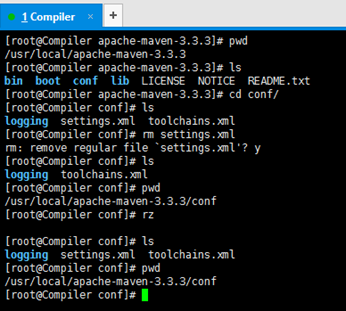

setting.xml配置文件 --转载的更多相关文章
- Maven之(六)setting.xml配置文件详解
setting.xml配置文件 maven的配置文件settings.xml存在于两个地方: 1.安装的地方:${M2_HOME}/conf/settings.xml 2.用户的目录:${user.h ...
- Maven之setting.xml配置文件详解
setting.xml配置文件 maven的配置文件settings.xml存在于两个地方: 1.安装的地方:${M2_HOME}/conf/settings.xml 2.用户的目录:${user.h ...
- setting.xml配置文件
在此,简单的说下. setting.xml 和 pom.xml这两各配置文件,到此是怎样? setting.xml setting.xml,这个配文件,是全局的. 比如你的是构建,web项目.我的是 ...
- maven学习(一)setting.xml配置文件详解
maven环境搭建: 1.官网下载zip包,解压至任意目录(如:E:\wly\apache-maven-3.2.5) 2.环境变量MAVEN_HOME(E:\wly\apache-maven-3.2. ...
- 6.Maven之(六)setting.xml配置文件详解
转自:https://blog.csdn.net/u012152619/article/details/51485152
- maven之(六)setting.xml的配置文件详解
setting.xml配置文件 maven的配置文件settings.xml存在于两个地方: 1.安装的地方:${M2_HOME}/conf/settings.xml 2.用户的目录:${user.h ...
- Maven配置文件setting.xml详解
注:本文来源于:大话JAVA的那些事 <Maven配置文件setting.xml详解> <?xml version="1.0" encoding="UT ...
- Idea中找不到xml配置文件问题研究以及classpath设置(转载)
问题: 在用Idea建立一个Java Application工程的时候,应用了Spring框架,可是Spring的xml配置文件找不到.检查表明不是代码的问题.费了我好长时间才解决. 出现问题,我 ...
- AndroidManifest.xml配置文件详解(转载)
AndroidManifest.xml配置文件详解 2013-01-05 10:25:23 分类: Android平台 AndroidManifest.xml配置文件对于Android应用开发来说是 ...
随机推荐
- Python 数据库之间差异对比
参考资料: Python 集合(set) 此脚本用于两个数据库之间的表.列.栏位.索引的差异对比. cat oracle_diff.py #!/home/dba/.pyenv/versions/3 ...
- 去除 DBGridEh SelectedRows里无效的书签
数据集处于过滤状态,然后选中几个记录,再修改了这些记录中的某个字段(和过滤条件有关),导致那几个记录不符合过滤条件,不显示了.但是SelectedRows里 还保存着.如果不删除SelectedRow ...
- L1-050 倒数第N个字符串
给定一个完全由小写英文字母组成的字符串等差递增序列,该序列中的每个字符串的长度固定为 L,从 L 个 a 开始,以 1 为步长递增.例如当 L 为 3 时,序列为 { aaa, aab, aac, . ...
- Objective-C 类别(category)和扩展(Extension)
1.类别(category) 使用Object-C中的分类,是一种编译时的手段,允许我们通过给一个类添加方法来扩充它(但是通过category不能添加新的实例变量),并且我们不需要访问类中的代码就可以 ...
- 算法训练 P1103
算法训练 P1103 时间限制:1.0s 内存限制:256.0MB 编程实现两个复数的运算.设有两个复数 和 ,则他们的运算公式为: 要求:(1)定义一个结构体类型来描述复数. ...
- length()
在MATLAB中: size:获取数组的行数和列数 length:数组长度(即行数或列数中的较大值) numel:元素总数. s=size(A),当只有一个输出参数时,返回一个行向量,该行向量的第一个 ...
- LuoguP4389 付公主的背包【生成函数+多项式exp】
题目背景 付公主有一个可爱的背包qwq 题目描述 这个背包最多可以装10^5105大小的东西 付公主有n种商品,她要准备出摊了 每种商品体积为Vi,都有10^5105件 给定m,对于s\in [1,m ...
- CTF之LSB信息隐藏术
LSB也就是最低有效位,原理是图片中的像素一般是由三种颜色构成,即三原色(绿红蓝),由这三种颜色可以组成其它各种颜色. 例如在PNG图片的储存中,每个颜色会有8bit,LSB隐写就是修改了像素中的最低 ...
- hdu1166 敌兵布阵 树状数组/线段树
数列的单点修改.区间求和 树状数组或线段树入门题 #include<stdio.h> #include<string.h> ],N; void add(int x,int a) ...
- PDFSharp生成PDF (转)
http://www.cnblogs.com/zhouxin/p/3228108.html 在上面用OpenXML生成word后,原来利用Word2010里的导出成PDF功能就不能用. 然后找开源组件 ...
